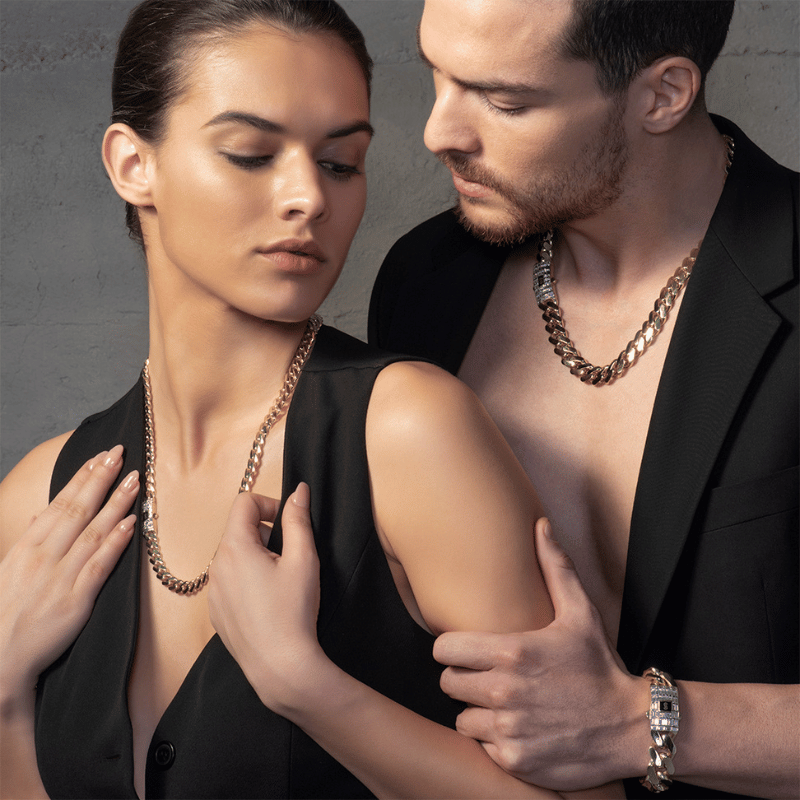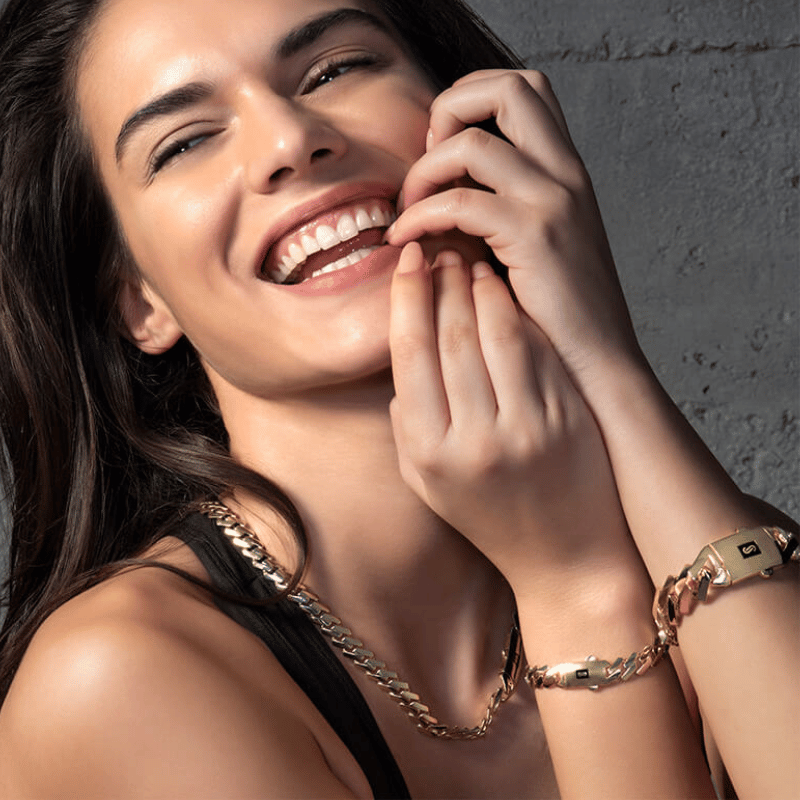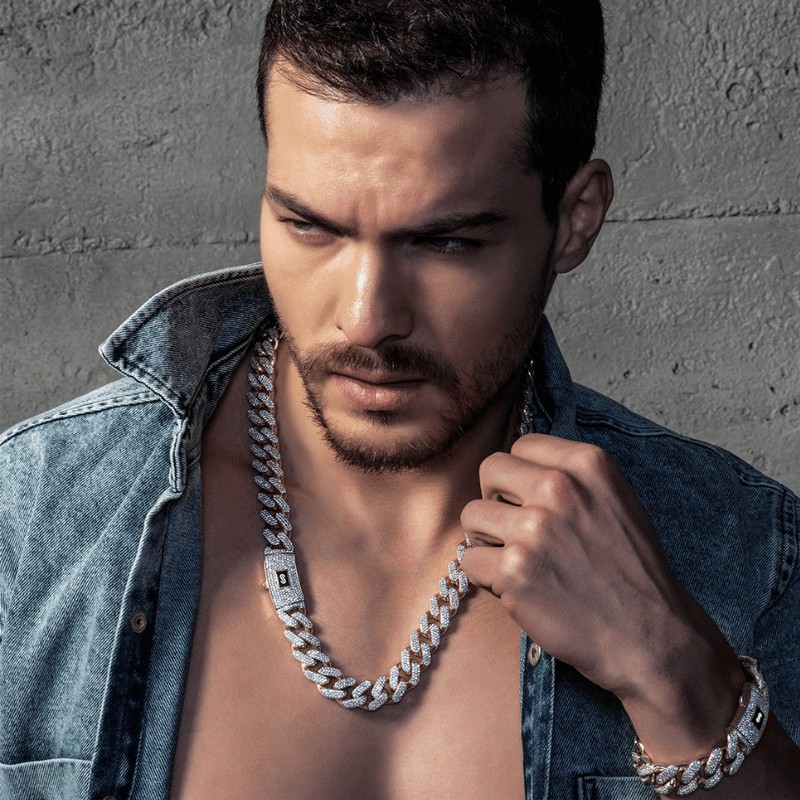
Épocas y Estilos de Joyería
Si buscas un curso intensivo sobre las características clave de los estilos de joyería a lo largo de la historia, ¡has llegado al lugar indicado! Sumérgete y descubre cómo distinguir piezas de diferentes épocas para demostrar tus conocimientos como un profesional.
Estilos de joyería a lo largo de la historia
No es ningún secreto que la gente se ha adornado con joyas durante siglos. Algunos de los primeros ejemplos que se conservan de adornos personales son la joyería sumeria hecha de cobre, oro y plata, que data del tercer milenio a. C. Otros estilos de joyería populares a lo largo de la historia incluyen la joyería renacentista de los siglos XIV al XVII , que combinaba metales como el oro con piedras preciosas y perlas, así como esmaltes de colores, y la joyería georgiana posterior de principios del siglo XVIII a mediados del XIX , que incorporaba piedras preciosas como perlas, zafiros, rubíes, granates y diamantes. Surgida hacia el final de la era georgiana, la joyería de la era de la Regencia , popularizada más recientemente en la serie Bridgerton , vio a las masas comenzar a experimentar con la ornamentación personal, con flores y símbolos como el uróboros que acompañaban a las gemas preciosas en collares, tocados y más.
Aunque hoy en día se pueden encontrar muy pocos ejemplos de joyería de la época georgiana o de la Regencia a la venta (la mayoría se conservan en museos), los amantes de la joyería vintage a veces pueden encontrar joyería de la época victoriana , que data de 1837 a 1901 y abarca una amplia gama de estilos, desde motivos de inspiración renacentista que reflejan la naturaleza hasta joyas de luto más sencillas, popularizadas tras la muerte del príncipe Alberto. De 1901 a 1915, la joyería eduardiana dominó brevemente el panorama, con diseños más intrincados y floridos gracias a técnicas avanzadas como la filigrana calada.
La joyería Art Decó, que debe su nombre a uno de los movimientos artísticos más populares del siglo XX , prevaleció entre 1920 y 1945 aproximadamente. Aunque a menudo se confunden con la joyería Art Nouveau, las piezas vintage de joyería Art Decó se destacan por sus ángulos agudos, patrones geométricos y diseños abstractos, en comparación con las líneas fluidas e inspiradas en la naturaleza del Art Nouveau.
¿Cómo sacar el máximo partido a tus piezas vintage?
Hoy en día, la joyería se considera una forma de autoexpresión para personas de todos los géneros, edades y orígenes. Por ello, se pueden encontrar piezas vintage o de inspiración vintage que inspiran épocas históricas en joyería, así como líneas ultramodernas, ¡e incluso diseños que combinan un poco de ambas!
Independientemente del tipo de joyería vintage que prefieras, es importante encontrar piezas que reflejen tu estilo personal para lograr un look chic. Otro factor importante es el cuidado que le des a tus piezas vintage : si usas las herramientas y técnicas adecuadas, estas piezas de inversión te harán lucir espectacular durante años.
Si está listo para comprar algunas piezas heredadas para su colección, no busque más que los diseños atemporales de inspiración vintage de Monaco Chain TM .

¿Cómo identificar la época de una joyería?
Existen varios indicadores de la fecha de fabricación de una joya. El primer indicio a tener en cuenta es un sello o marca de joyería, generalmente presente en el interior de anillos o cerca del cierre de collares y pulseras, que indica cuándo y dónde se produjo. Otra forma de identificar la época de la joyería es por el material y el estilo: ¿tiene piedras preciosas emblemáticas de un período determinado? ¿Tiene líneas geométricas o fluidas? Prestar atención a estos detalles puede ayudarte a delimitar la época de tus piezas.
¿Cómo hacer joyas de la época victoriana?
La joyería de la época victoriana, en particular sus collares , es conocida por el uso de una amplia variedad de piedras preciosas, desde ágata, ámbar y amatista hasta diamantes, esmeraldas, granates, cuarzos, topacios, turquesas y más. Los anillos y broches también solían incluir gemas preciosas sobre oro.
¿Cómo se esmaltaban las joyas durante la época isabelina?
Durante la era isabelina, desde mediados del siglo XVI hasta principios del siglo XVII , las joyas, especialmente las piezas de oro, se esmaltaban utilizando vidrio coloreado.
¿De qué época son las joyas de los años 1940?
Las joyas de la década de 1940 abarcan una variedad de estilos, desde ornamentadas pulseras y collares Art Decó hasta piezas más retro hechas con gemas y metales menos preciosos durante el período de guerra.
¿De qué época son las joyas de los años 50?
En muchos sentidos, la década de 1950 marcó el regreso a las mejores cosas de la vida después de la guerra, incluyendo la joyería. El estilo era más ostentoso y glamuroso en comparación con la década de 1940, con las líneas angulares de la joyería Art Déco de la década de 1920 volviendo a ponerse de moda y reinterpretadas a través de collares de varias vueltas y perlas artificiales.
¿Son los estilos eduardiano y victoriano lo mismo?
Aunque la era eduardiana duró mucho menos que la era victoriana, dejó su marca en la historia de la joyería, ya que difería enormemente de la joyería victoriana en estilo: gracias a los avances en la fabricación de joyas en ese momento, la joyería eduardiana es mucho más ornamentada y detallada en su construcción que la joyería victoriana.
¿Qué son los cristales georgianos?
Los cristales georgianos (también conocidos como pasta georgiana) reciben su nombre del período georgiano, comprendido entre 1714 y 1837, durante los reinados de Jorge I, II, III y IV. Son un tipo de vidrio tallado a mano y pulido con polvo metálico para brillar como gemas preciosas. Los tipos más comunes de corte de cristal georgiano son el corte rosa, el corte de mina antigua y el corte de mesa.
¿Qué estilo es el Art Nouveau?
El período Art Nouveau, que abarca desde 1890 hasta 1910, se superpone con la época eduardiana. Ambos estilos son conocidos por su énfasis en la ornamentación, pero mientras que las joyas de la época eduardiana presentan formas más simétricas, la joyería Art Nouveau es mucho más libre, inspirándose en la naturaleza.
¿Qué colores se utilizan en el Art Nouveau?
Como movimiento artístico que celebraba la naturaleza por sobre todas las cosas, el Art Nouveau presentó una gran cantidad de tonos naturales apagados: piense en marrones y mostazas combinados con una amplia variedad de verdes, desde oliva hasta salvia y esmeralda.
¿Qué son las joyas de la era retro?
Con cierta similitud con el período Art Déco, la joyería de la era retro abarca las llamativas joyas populares entre 1939 y 1950, con abundante oro con pavé de diamantes y un resurgimiento de los intrincados motivos eduardianos. Algunos de los diseños más perdurables de esta época incluyen broches con elementos móviles y anillos con diseño de bombé.
¿Había gargantillas en los años 80?
Las gargantillas, uno de los estilos de joyería más populares de los 70 , también triunfaron en los 80. Los estilos voluminosos de la década anterior se actualizaron con perlas y colgantes en los 80, antes de la llegada de las gargantillas con tatuajes en los 90.
¿Qué tipo de joyas están de moda ahora?
Con tantas marcas y estilos de joyería disponibles hoy en día, es fácil encontrar piezas tanto vintage como modernas para cualquier estilo. Además de diseños atemporales con metales como oro, plata y platino, también puedes optar por piezas maximalistas deslumbrantes con todo tipo de piedras preciosas, optar por collares y pulseras con dijes divertidos, o probar el popular collar de ojo griego . Las personas más aventureras pueden incluso combinar estilos vintage y modernos para lograr un look ecléctico.
¿Qué es la joyería contemporánea moderna?
La joyería moderna contemporánea no es un estilo único, sino un término general para los estilos que son populares actualmente, ¡a veces todos a la vez! Esto significa que la joyería moderna contemporánea puede abarcar una amplia gama de estilos, desde una interpretación moderna de un brazalete de diamantes Art Déco hasta una gruesa cadena de oro. Por lo general, las piezas modernas suelen presentar menos ornamentación que sus contrapartes vintage, pero también es posible encontrar piezas extremadamente detalladas y artesanales.


